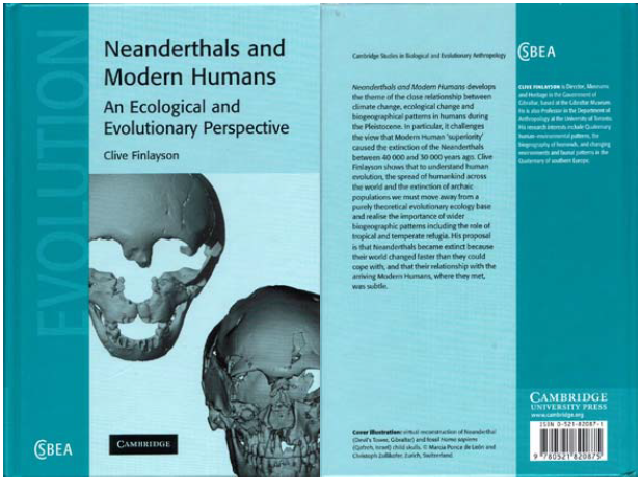Finlayson, C. 2004. Neanderthals and modern humans. An ecological and evolutionary perspective. - Cambridge, Cambridge University Press
Abstract
Two main theories have competed the last two decades to explain modern human origins. The ‘Out of Africa model’ emphasises replacement as the dominant mechanism responsible for the disappearance of archaic hominin populations and the spread of modern humans. The opposing idea, known as the ‘Multiregional Evolution model’, proposes that modern humans evolved over a long period of time from several archaic populations in various regions of the Old World. For many years, Neanderthals have played an important role in debates concerning our ancestry. Were Neanderthals our ancestors, or did we, modern humans, replace them? Did they become extinct, and if so, why? So many words have been devoted to this topic that the thought forces itself to the surface: is this book an interesting contribution?
The answer is yes. Finlayson (p. 89) remarks: "A central problem today is the absence of a coherent interdisciplinary approach and a unified theory of human evolution is urgently required". I agree. An interdisciplinary approach is still much needed. Furthermore, investigation in this field needs an ecological framework, given the fact that humans, like all other organisms, do not evolve in a vacuum but within an environmental context. Finlayson provides such an ecological framework, which makes his contribution particularly valuable. In his book he explains his ideas and theory systematically, first providing the basis and guiding the reader to its culmination in the contradictory titled chapter 8 ‘The survival of the weakest’. The book is illustrated with tables, diagrams and maps. Read more...
Downloads




